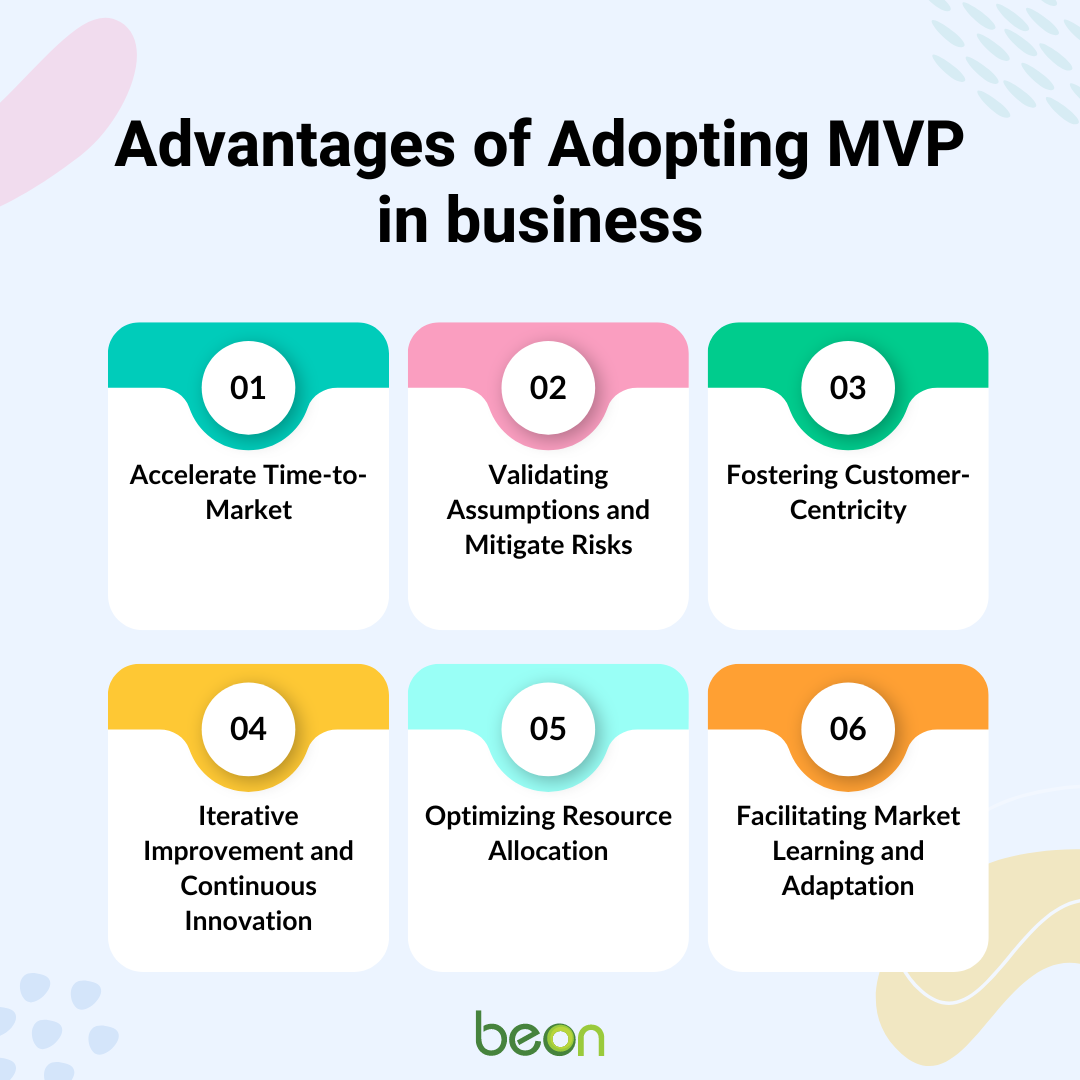The concept of the Minimum Viable Product (MVP) has emerged as a crucial strategy for start-ups and established enterprises alike.
The MVP approach has revolutionized the way businesses develop and launch products, enabling them to mitigate risks, validate assumptions, and deliver value to customers efficiently.
In this blog post, we explain the significance of MVP in business and explore how embracing this methodology can drive success and sustainable growth.
Table of Contents
| Understanding Minimum Viable Product (MVP) |
| Accelerate Time-to-Market |
| Validating Assumptions and Mitigate Risks |
| Fostering Customer-Centricity |
| Iterative Improvement and Continuous Innovation |
| Optimizing Resource Allocation |
| Facilitating Market Learning and Adaptation |
| Not Convinced? Some Famous MVP Success Stories |
| Dropbox |
| Airbnb |
| Spotify |
| MVP: Develop to Disrupt |
Understanding Minimum Viable Product (MVP)
Before exploring its importance, let’s define what exactly a Minimum Viable Product entails. Simply put, an MVP is the most basic version of a product that includes only essential features necessary to address the core problem or fulfill the primary need of the target audience.
Rather than aiming for perfection from the outset, MVP advocates for rapid development and deployment, allowing businesses to gather feedback, iterate, and refine their offerings based on real-world usage and market response.
Adopting MVP in business translates into myriad advantages. It helps you:

- Accelerate Time-to-Market
One of the primary advantages of adopting the MVP approach is its ability to accelerate time-to-market.
Focusing on delivering a functional prototype with minimal features allows companies to shorten development cycles and quickly gauge market interest.
This rapid deployment not only helps in seizing early-mover advantage but also enables businesses to stay ahead of competitors and capitalize on emerging trends. - Validating Assumptions and Mitigate Risks
Innovation inherently involves a degree of uncertainty, with numerous assumptions underlying every product idea. Using MVP in business serves as a powerful tool for validating these assumptions and mitigating risks associated with product development.
Releasing a stripped-down version of the product to the target audience enables businesses to gather invaluable feedback on user preferences, pain points, and behaviors, allowing them to make informed decisions and course corrections before investing significant resources. - Fostering Customer-Centricity
In today’s hyper-competitive market landscape, customer-centricity has become a non-negotiable principle for business success. Building a minimum viable product aligns perfectly with this ethos by prioritizing customer feedback and preferences right from the initial stages of product development.
Engaging users early in the process and incorporating their input into subsequent iterations ensures that the final product resonates with the target audience, thereby enhancing customer satisfaction and loyalty. - Iterative Improvement and Continuous Innovation
The MVP methodology emphasizes iterative improvement and continuous innovation as core tenets of product development. Rather than viewing the initial release as the endpoint, businesses treat it as the beginning of a dynamic feedback loop.
Through successive iterations and incremental enhancements, companies can refine their product offering, add new features, and adapt to evolving market dynamics, thereby staying relevant and competitive in the long run. - Optimizing Resource Allocation
In today’s resource-constrained environment, efficient allocation of resources is paramount for business sustainability. The Minimum Viable Product approach enables companies to optimize resource allocation by focusing on essential features and functionalities that deliver maximum value to customers.
By avoiding unnecessary bells and whistles, businesses can conserve resources, minimize development costs, and allocate funds more judiciously to areas that drive growth and profitability. - Facilitating Market Learning and Adaptation
In the fast-evolving business landscape, adaptability is key to survival. MVP empowers companies to embrace a culture of experimentation and learning, where failures are viewed as valuable lessons rather than setbacks.
By releasing products early and frequently, businesses can gather actionable insights into market preferences, competitive dynamics, and emerging trends, enabling them to adapt their strategies swiftly and capitalize on new opportunities.
Not Convinced? Some Famous MVP Success Stories
Numerous success stories attest to the transformative power of the MVP approach across diverse industries. Here are a few notable examples to illustrate how utilising MVP in business has allowed companies to achieve remarkable success.
- Dropbox:
Dropbox, the cloud-based file storage service, is a classic example of MVP in action. Drew Houston, the company’s co-founder, initially created a simple MVP—a video demonstrating the concept of cloud storage with a drag-and-drop feature.
This video garnered significant interest, validating the demand for such a solution. Armed with this validation, Dropbox proceeded to develop a functional prototype with minimal features, allowing users to upload and share files effortlessly.
As user adoption grew, Dropbox iteratively added new features based on user feedback, such as file synchronization and mobile access. - Airbnb:
Airbnb, the peer-to-peer lodging marketplace, started with a humble MVP—a simple website listing air mattresses for rent in the founders’ apartment. This basic premise allowed the founders to validate their hypothesis that travelers would be willing to stay in strangers’ homes.
As demand increased, Airbnb expanded its offerings and refined its platform based on user feedback. By continuously iterating and adding features like user reviews, secure payments, and professional photography, Airbnb transformed into a global hospitality giant, disrupting the traditional hotel industry in the process. - Spotify:
Spotify, the music streaming service, revolutionized the way people consume music with its MVP approach. Initially launched in a limited beta version, Spotify offered basic features such as streaming music and creating playlists.
By releasing its MVP to a select group of users, Spotify gathered valuable feedback on user preferences and behavior, enabling it to refine its platform and expand its catalog.
Over time, Spotify added features like personalized recommendations, social sharing, and offline listening, cementing its position as a leader in the competitive streaming market.
By starting small, testing assumptions, and iterating based on user feedback, companies can emulate the success of Dropbox, Airbnb, Spotify, and countless other MVP pioneers across various industries.
MVP: Develop to Disrupt
The Minimum Viable Product (MVP) methodology represents a paradigm shift in the way businesses approach product development and innovation. By prioritizing speed, customer feedback, and iterative improvement, MVP enables companies to mitigate risks, accelerate time-to-market, and foster sustainable growth in today’s dynamic business environment.
As competition intensifies and consumer expectations continue to evolve, the adoption of Minimum Viable Product methodology isn’t just a choice—it’s a strategic imperative for those daring to pioneer, adapt, and thrive in the relentless pursuit of innovation and success.
Follow us for more on LinkedIn


